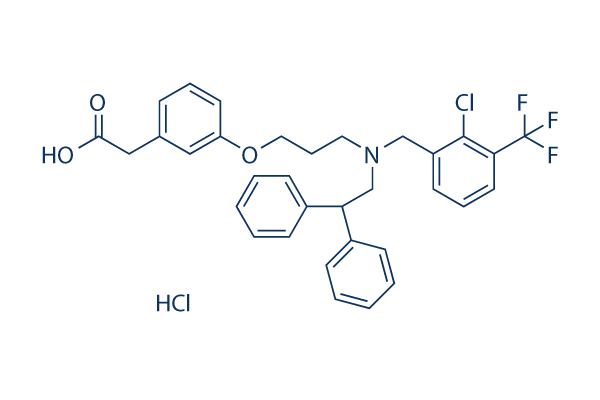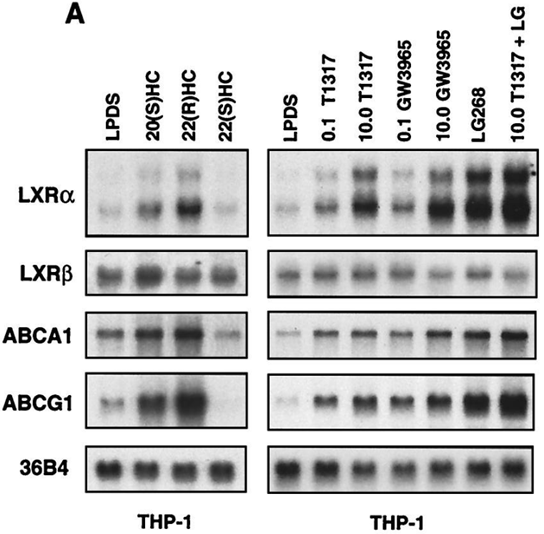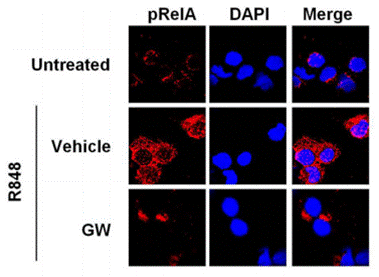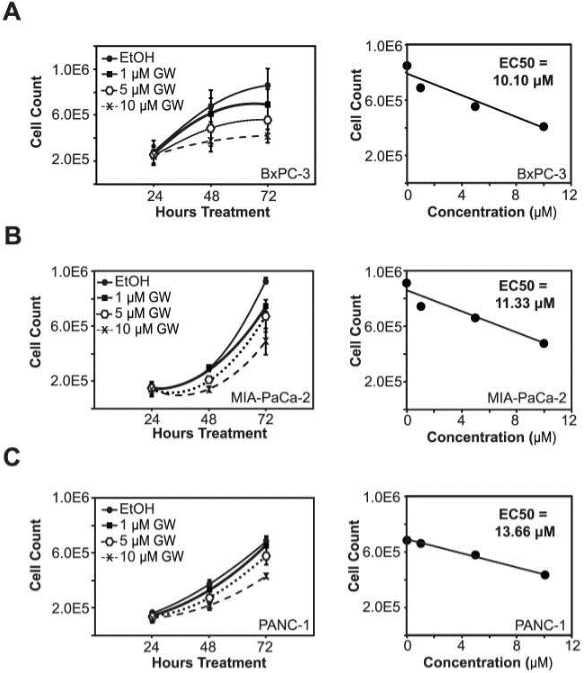
- Inhibitors
- By product type
- Natural Products
- Inducing Agents
- Peptides
- Antibiotics
- Antibody-drug Conjugates(ADC)
- PROTAC
- Hydrotropic Agents
- Dyes
- By Signaling Pathways
- PI3K/Akt/mTOR
- Epigenetics
- Methylation
- Immunology & Inflammation
- Protein Tyrosine Kinase
- Angiogenesis
- Apoptosis
- Autophagy
By research - Antibodies
- Compound Libraries
- Popular Compound Libraries
- Customize Library
- Clinical and FDA-approved Related
- Bioactive Compound Libraries
- Inhibitor Related
- Natural Product Related
- Metabolism Related
- Cell Death Related
- By Signaling Pathway
- By Disease
- Anti-infection and Antiviral Related
- Neuronal and Immunology Related
- Fragment and Covalent Related
- FDA-approved Drug Library
- FDA-approved & Passed Phase I Drug Library
- Preclinical/Clinical Compound Library
- Bioactive Compound Library-I
- Bioactive Compound Library-Ⅱ
- Kinase Inhibitor Library
- Express-Pick Library
- Natural Product Library
- Human Endogenous Metabolite Compound Library
- Alkaloid Compound LibraryNew
- Angiogenesis Related compound Library
- Anti-Aging Compound Library
- Anti-alzheimer Disease Compound Library
- Antibiotics compound Library
- Anti-cancer Compound Library
- Anti-cancer Compound Library-Ⅱ
- Anti-cancer Metabolism Compound Library
- Anti-Cardiovascular Disease Compound Library
- Anti-diabetic Compound Library
- Anti-infection Compound Library
- Antioxidant Compound Library
- Anti-parasitic Compound Library
- Antiviral Compound Library
- Apoptosis Compound Library
- Autophagy Compound Library
- Calcium Channel Blocker LibraryNew
- Cambridge Cancer Compound Library
- Carbohydrate Metabolism Compound LibraryNew
- Cell Cycle compound library
- CNS-Penetrant Compound Library
- Covalent Inhibitor Library
- Cytokine Inhibitor LibraryNew
- Cytoskeletal Signaling Pathway Compound Library
- DNA Damage/DNA Repair compound Library
- Drug-like Compound Library
- Endoplasmic Reticulum Stress Compound Library
- Epigenetics Compound Library
- Exosome Secretion Related Compound LibraryNew
- FDA-approved Anticancer Drug LibraryNew
- Ferroptosis Compound Library
- Flavonoid Compound Library
- Fragment Library
- Glutamine Metabolism Compound Library
- Glycolysis Compound Library
- GPCR Compound Library
- Gut Microbial Metabolite Library
- HIF-1 Signaling Pathway Compound Library
- Highly Selective Inhibitor Library
- Histone modification compound library
- HTS Library for Drug Discovery
- Human Hormone Related Compound LibraryNew
- Human Transcription Factor Compound LibraryNew
- Immunology/Inflammation Compound Library
- Inhibitor Library
- Ion Channel Ligand Library
- JAK/STAT compound library
- Lipid Metabolism Compound LibraryNew
- Macrocyclic Compound Library
- MAPK Inhibitor Library
- Medicine Food Homology Compound Library
- Metabolism Compound Library
- Methylation Compound Library
- Mouse Metabolite Compound LibraryNew
- Natural Organic Compound Library
- Neuronal Signaling Compound Library
- NF-κB Signaling Compound Library
- Nucleoside Analogue Library
- Obesity Compound Library
- Oxidative Stress Compound LibraryNew
- Plant Extract Library
- Phenotypic Screening Library
- PI3K/Akt Inhibitor Library
- Protease Inhibitor Library
- Protein-protein Interaction Inhibitor Library
- Pyroptosis Compound Library
- Small Molecule Immuno-Oncology Compound Library
- Mitochondria-Targeted Compound LibraryNew
- Stem Cell Differentiation Compound LibraryNew
- Stem Cell Signaling Compound Library
- Natural Phenol Compound LibraryNew
- Natural Terpenoid Compound LibraryNew
- TGF-beta/Smad compound library
- Traditional Chinese Medicine Library
- Tyrosine Kinase Inhibitor Library
- Ubiquitination Compound Library
-
Cherry Picking
You can personalize your library with chemicals from within Selleck's inventory. Build the right library for your research endeavors by choosing from compounds in all of our available libraries.
Please contact us at info@selleckchem.com to customize your library.
You could select:
- Bioreagents
- qPCR
- 2x SYBR Green qPCR Master Mix
- 2x SYBR Green qPCR Master Mix(Low ROX)
- 2x SYBR Green qPCR Master Mix(High ROX)
- Protein Assay
- Protein A/G Magnetic Beads for IP
- Anti-Flag magnetic beads
- Anti-Flag Affinity Gel
- Anti-Myc magnetic beads
- Anti-HA magnetic beads
- Poly DYKDDDDK Tag Peptide lyophilized powder
- Protease Inhibitor Cocktail
- Protease Inhibitor Cocktail (EDTA-Free, 100X in DMSO)
- Phosphatase Inhibitor Cocktail (2 Tubes, 100X)
- Cell Biology
- Cell Counting Kit-8 (CCK-8)
- Animal Experiment
- Mouse Direct PCR Kit (For Genotyping)
- Featured Products
- MRTX1133
- Nab-Paclitaxel
- KP-457
- IAG933
- RMC-6236 (Daraxonrasib)
- RMC-7977
- Zoldonrasib (RMC-9805)
- GsMTx4
- Navitoclax (ABT-263)
- TSA (Trichostatin A)
- Y-27632 Dihydrochloride
- SB431542
- SB202190
- MK-2206 Dihydrochloride
- LY294002
- Alisertib (MLN8237)
- XAV-939
- CHIR-99021 (Laduviglusib)
- Bafilomycin A1 (Baf-A1)
- Thiazovivin (TZV)
- CP-673451
- Verteporfin
- DAPT
- Galunisertib (LY2157299)
- MG132
- SBE-β-CD
- Tween 80
- Bavdegalutamide (ARV-110)
- Z-VAD-FMK
- Wnt-C59 (C59)
- IWR-1-endo
- (+)-JQ1
- 3-Deazaneplanocin A (DZNep) Hydrochloride
- RepSox (E-616452)
- Erastin
- Q-VD-Oph
- Puromycin Dihydrochloride
- Cycloheximide
- Telaglenastat (CB-839)
- A-83-01
- Ceralasertib (AZD6738)
- Liproxstatin-1
- Emricasan (IDN-6556)
- PMA (Phorbol 12-myristate 13-acetate)
- Dibutyryl cAMP (Bucladesine) sodium
- Nedisertib (M3814)
- PLX5622
- IKE (Imidazole Ketone Erastin)
- STM2457
- Saruparib (AZD5305)
- New Products
- Contact Us
research use only
GW3965 Hydrochloride LXR Agonist
Cat.No.S2630

Chemical Structure
Molecular Weight: 618.51
Quality Control
Batch:
Purity:
99.88%
99.88
Products Often Used Together with GW3965 Hydrochloride
Cell Culture, Treatment & Working Concentration
| Cell Lines | Assay Type | Concentration | Incubation Time | Formulation | Activity Description | PMID |
|---|---|---|---|---|---|---|
| HEK293 | 10 uM | 20 hrs | Activation of human LXRalpha expressed in HEK293 cells co-expressing human RXRalpha at 10 uM after 20 hrs by luciferase reporter gene assay | 28006909 | ||
| HEK293 | 10 uM | 20 hrs | Activation of rat LXRbeta expressed in HEK293 cells co-expressing human RXRalpha at 10 uM after 20 hrs by luciferase reporter gene assay | 28006909 | ||
| THP1 | Function assay | Induction of cholesterol efflux in THP1 cells, EC50 = 0.01 μM. | 17587573 | |||
| THP1 | Function assay | 18 hrs | Induction of cholesterol efflux in THP1 cells after 18 hrs, EC50 = 0.01 μM. | 17416521 | ||
| COS7 | Function assay | 16 hrs | Agonist activity at human LXRbeta receptor transfected in COS7 cells after 16 hrs by reporter transactivation assay, EC50 = 0.015 μM. | 17587573 | ||
| COS7 | Function assay | Activation of LXRbeta co-transfected in COS7 cells with RXRalpha by reporter transactivation assay, EC50 = 0.015 μM. | 17416521 | |||
| THP1 | Antiinflammatory assay | 6 hrs | Antiinflammatory activity against human THP1 cells assessed as inhibition of LPS-stimulated IL6 production after 6 hrs by ELISA, IC50 = 0.02 μM. | 18800767 | ||
| THP1 | Function assay | Agonist activity at GAL-linked human LXRbeta expressed in THP1 cells assessed as stimulation of co-activator recruitment by FRET assay, EC50 = 0.027 μM. | 17665897 | |||
| RAW264.7 | Function assay | 24 hrs | Induction of [3H]cholesterol efflux in mouse RAW264.7 cells loaded with acetylated-LDL after 24 hrs, EC50 = 0.029 μM. | 19717304 | ||
| THP1 | Function assay | Stimulation of [3H]cholesterol efflux in human THP1 foam cells loaded with ac-LDL, EC50 = 0.031 μM. | 18973288 | |||
| CV1 | Function assay | Antagonist activity at LXRbeta ligand binding domain assessed as inhibition of T1317-induced transcriptional activity in african green monkey CV1 cells co-transfected with Gal4-SRC1 by luciferase reporter assay, IC50 = 0.03981 μM. | 20345102 | |||
| THP1 | Function assay | Agonist activity at GAL-linked human LXRalpha expressed in THP1 cells assessed as stimulation of coactivator recruitment by FRET assay, EC50 = 0.097 μM. | 17665897 | |||
| CV1 | Function assay | Antagonist activity at LXRalpha ligand binding domain assessed as inhibition of T1317-induced transcriptional activity in african green monkey CV1 cells co-transfected with Gal4-SRC1 by luciferase reporter assay, IC50 = 0.1 μM. | 20345102 | |||
| SH-SY5Y | Function assay | 24 hrs | Agonist activity at human LXRbeta expressed in human SH-SY5Y cells co-transfected with Gal4-LBD after 24 hrs by luciferase reporter gene assay, EC50 = 0.13 μM. | 19264481 | ||
| HepG2 | Function assay | Effect on SREBP1c gene expression in human HepG2 cells, EC50 = 0.21 μM. | 18973288 | |||
| HuH7 | Function assay | Agonist activity at human recombinant LXRbeta ligand binding domain in human HuH7 cells co-transfected with fused Gal4-DBD by transactivation assay, EC50 = 0.31 μM. | 18973288 | |||
| SH-SY5Y | Function assay | 24 hrs | Agonist activity at human LXRalpha expressed in human SH-SY5Y cells co-transfected with Gal4-LBD after 24 hrs by luciferase reporter gene assay, EC50 = 0.31 μM. | 19264481 | ||
| CHO | Function assay | Agonist activity at human LXR beta receptor expressed in CHO cells by reporter assay, EC50 = 0.41 μM. | 17034119 | |||
| CHOK1 | Function assay | 24 hrs | Agonist activity at Gal4-tagged LXRbeta (unknown origin) expressed in CHOK1 cells after 24 hrs by luciferase reporter gene assay, EC50 = 0.42 μM. | 25677664 | ||
| THP1 | Function assay | Effect on ABCA1 gene expression in human differentiated THP1 cells, EC50 = 0.434 μM. | 18973288 | |||
| CV1 | Function assay | Agonist activity at LXRbeta ligand binding domain-mediated transcriptional activity in african green monkey CV1 cells co-transfected with Gal4-SRC1 by luciferase reporter assay, EC50 = 0.50119 μM. | 20345102 | |||
| HuH7 | Function assay | Agonist activity at human recombinant LXRalpha ligand binding domain in human HuH7 cells co-transfected with fused Gal4-DBD by transactivation assay, EC50 = 0.66 μM. | 18973288 | |||
| CV1 | Function assay | Agonist activity at LXRalpha ligand binding domain-mediated transcriptional activity in african green monkey CV1 cells co-transfected with Gal4-SRC1 by luciferase reporter assay, EC50 = 0.79433 μM. | 20345102 | |||
| CHOK1 | Function assay | 24 hrs | Agonist activity at Gal4-tagged LXRalpha (unknown origin) expressed in CHOK1 cells after 24 hrs by luciferase reporter gene assay, EC50 = 1.3 μM. | 25677664 | ||
| HepG2 | Function assay | Effect on triglyceride accumulation in human HepG2 cells, EC50 = 2.002 μM. | 18973288 | |||
| HepG2 | Function assay | 500 nM | Inhibition of 2-(3-(3-((2-chloro-3-(trifluoromethyl)benzyl)(2,2-diphenylethyl)amino)propoxy)phenyl)acetic acid-induced srebp1c mRNA expression in human HepG2 cells at 500 nM | 18800767 | ||
| HepG2 | Function assay | 500 nM | Inhibition of 2-(3-(3-((2-chloro-3-(trifluoromethyl)benzyl)(2,2-diphenylethyl)amino)propoxy)phenyl)acetic acid-induced fas mRNA expression in human HepG2 cells at 500 nM | 18800767 | ||
| RAW264.7 | Function assay | 1 uM | Reduction of LPS-stimulated iNOS gene expression in mouse RAW264.7 cells expressing LXRalpha at 1 uM by luciferase reporter gene assay | 18800767 | ||
| RAW264.7 | Function assay | 1 uM | Inhibition of LPS-stimulated nuclear co-repressor release from iNOS promoter in mouse RAW264.7 cells at 1 uM by RT-PCR | 18800767 | ||
| HeLa | Function assay | 1 uM | Induction of LXRbeta SUMOylation by SUMO2 in human HeLa cells at 1 uM by Western blot analysis | 18800767 | ||
| HeLa | Function assay | 1 uM | Induction of LXRbeta SUMOylation by SUMO3 in human HeLa cells at 1 uM by Western blot analysis | 18800767 | ||
| HeLa | Function assay | 1 uM | Induction of LXRalpha SUMOylation by SUMO3 in human HeLa cells at 1 uM by Western blot analysis | 18800767 | ||
| DAOY | qHTS assay | qHTS of pediatric cancer cell lines to identify multiple opportunities for drug repurposing: Primary screen for DAOY cells | 29435139 | |||
| SJ-GBM2 | qHTS assay | qHTS of pediatric cancer cell lines to identify multiple opportunities for drug repurposing: Primary screen for SJ-GBM2 cells | 29435139 | |||
| A673 | qHTS assay | qHTS of pediatric cancer cell lines to identify multiple opportunities for drug repurposing: Primary screen for A673 cells | 29435139 | |||
| SK-N-MC | qHTS assay | qHTS of pediatric cancer cell lines to identify multiple opportunities for drug repurposing: Primary screen for SK-N-MC cells | 29435139 | |||
| BT-37 | qHTS assay | qHTS of pediatric cancer cell lines to identify multiple opportunities for drug repurposing: Primary screen for BT-37 cells | 29435139 | |||
| NB-EBc1 | qHTS assay | qHTS of pediatric cancer cell lines to identify multiple opportunities for drug repurposing: Primary screen for NB-EBc1 cells | 29435139 | |||
| SK-N-SH | qHTS assay | qHTS of pediatric cancer cell lines to identify multiple opportunities for drug repurposing: Primary screen for SK-N-SH cells | 29435139 | |||
| BT-12 | qHTS assay | qHTS of pediatric cancer cell lines to identify multiple opportunities for drug repurposing: Primary screen for BT-12 cells | 29435139 | |||
| OHS-50 | qHTS assay | qHTS of pediatric cancer cell lines to identify multiple opportunities for drug repurposing: Primary screen for OHS-50 cells | 29435139 | |||
| RD | qHTS assay | qHTS of pediatric cancer cell lines to identify multiple opportunities for drug repurposing: Primary screen for RD cells | 29435139 | |||
| MG 63 (6-TG R) | qHTS assay | qHTS of pediatric cancer cell lines to identify multiple opportunities for drug repurposing: Primary screen for MG 63 (6-TG R) cells | 29435139 | |||
| Rh30 | qHTS assay | qHTS of pediatric cancer cell lines to identify multiple opportunities for drug repurposing: Primary screen for Rh30 cells | 29435139 | |||
| Rh41 | qHTS assay | qHTS of pediatric cancer cell lines to identify multiple opportunities for drug repurposing: Primary screen for Rh41 cells | 29435139 | |||
| Click to View More Cell Line Experimental Data | ||||||
Chemical Information, Storage & Stability
| Molecular Weight | 618.51 | Formula | C33H31ClF3NO3.HCl |
Storage (From the date of receipt) | |
|---|---|---|---|---|---|
| CAS No. | 405911-17-3 | Download SDF | Storage of Stock Solutions |
|
|
| Synonyms | N/A | Smiles | C1=CC=C(C=C1)C(CN(CCCOC2=CC=CC(=C2)CC(=O)O)CC3=C(C(=CC=C3)C(F)(F)F)Cl)C4=CC=CC=C4.Cl | ||
Solubility
|
In vitro |
DMSO
: 100 mg/mL
(161.67 mM)
Water : Insoluble Ethanol : Insoluble |
Molarity Calculator
|
In vivo |
|||||
In vivo Formulation Calculator (Clear solution)
Step 1: Enter information below (Recommended: An additional animal making an allowance for loss during the experiment)
mg/kg
g
μL
Step 2: Enter the in vivo formulation (This is only the calculator, not formulation. Please contact us first if there is no in vivo formulation at the solubility Section.)
% DMSO
%
% Tween 80
% ddH2O
%DMSO
%
Calculation results:
Working concentration: mg/ml;
Method for preparing DMSO master liquid: mg drug pre-dissolved in μL DMSO ( Master liquid concentration mg/mL, Please contact us first if the concentration exceeds the DMSO solubility of the batch of drug. )
Method for preparing in vivo formulation: Take μL DMSO master liquid, next addμL PEG300, mix and clarify, next addμL Tween 80, mix and clarify, next add μL ddH2O, mix and clarify.
Method for preparing in vivo formulation: Take μL DMSO master liquid, next add μL Corn oil, mix and clarify.
Note: 1. Please make sure the liquid is clear before adding the next solvent.
2. Be sure to add the solvent(s) in order. You must ensure that the solution obtained, in the previous addition, is a clear solution before proceeding to add the next solvent. Physical methods such
as vortex, ultrasound or hot water bath can be used to aid dissolving.
Mechanism of Action
| Targets/IC50/Ki | |
|---|---|
| In vitro |
GW3965 recruits the steroid receptor coactivator 1 to human LXRα with EC50 of 125 nM in a cell-free ligand-sensing assay. [1] GW3965 shows a potent antagonistic activity against hLXRα and hLXRβ in cell-based assays with EC50 of 190 nM and 30 nM, respectively. Besides, GW3965 also sows excellent selectivity over other nuclear receptors. [1] In human islets, GW3965 (1 μM) reduces expression of selected pro-inflammatory cytokines including IL-8, monocyte chemotactic protein-1 and tissue factor. [4] |
| In vivo |
In mice, GW3965 at a dose of 10 mg/kg upregulates ABCA1 expression 8-fold and raises circulating levels of HDL by 30% with Cmax of 12.7 μg/mL and t1/2 of 2 hours. [1] GW3965 (10mg/kg) induces expression of ABCA1 and ABCG1 and shows potent antiatherogenic activity in both LDLR−/− and apoE−/− mice. [2] In male sprague-dawley rats, GW3965 reduces Ang II-mediated increases in blood pressure and decreases vascular Ang II receptor gene expression. [3] In Glioblastoma mouse model, GW3965 results in inducible degrader of LDLR-mediated LDLR degradation, increased expression of the ABCA1 cholesterol efflux transporter, and thus potently promotes tumor cell death. [5] |
References |
|
Applications
| Methods | Biomarkers | Images | PMID |
|---|---|---|---|
| Western blot | LXRα / LXRβ / ABCA1 / ABCG1 Skp2 / pEGFR / EGFR / pERK / ERK |

|
11604492 |
| Immunofluorescence | pRelA LAMP-1 / LDLR |

|
26635040 |
| Growth inhibition assay | Cell viability |

|
25184494 |
Tech Support
Tel: +1-832-582-8158 Ext:3
If you have any other enquiries, please leave a message.
Frequently Asked Questions
Question 1:
How to formulate it for mouse in vivo experiment?
Answer:
It can be dissolved in 2% DMSO/30% PEG 300/dd H2O at 10 mg/mL as a homogeneous suspension. This vehicle is suitable for oral gavage to mice.






































